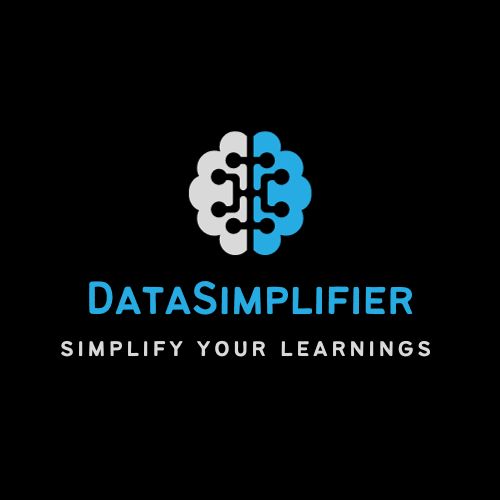Introduction
Hello, aspiring data scientists and AI enthusiasts in India! Are you preparing for your next AI, ML, or data analytics interview, and feeling a bit lost in the world of neural networks? This is your ultimate guide to conquering neural network compression. We’re breaking down this crucial topic with a practical and engaging approach, perfect for Indian students and working professionals seeking to advance their careers. With time, neural network compression understanding is simply not an option, but a have-to for the AI world today.

This all-inclusive guide “Neural Network Compression” deals with everything you should understand to wow interviewers at demonstrating significant mastery of neural network compression framework and techniques. From the basics of neural network topics of compression and data compression to advanced techniques and practical application—this is it. We will cover many neural network compression methods, thus giving you a complete and comprehensive survey of the field. In this article, we will deeply dive into the functional perspective of neural network compression, which would help you truly understand how it works.
Neural network compression is the process of reducing the size of neural networks without losing much accuracy in them. In a field brimming with complex algorithms and cutting-edge advancements, neural network compression is a key topic for understanding and using advanced neural network models.
Understanding techniques for compressing neural network models is critical, whether you are preparing for a technical interview for a data science position or simply want to expand your knowledge in the exciting world of AI and machine learning. A survey of neural network compression will illuminate the best strategies and techniques.
This detailed guide on neural network compression will illuminate the entire process, from the fundamental concepts to the more intricate strategies. It serves as your essential toolkit for tackling the challenges of neural network compression and confidently answering interview questions on the subject. This will help you on your way to learning neural network compression – in this case, the functional view. This is your go-to resource for understanding neural network compression so that you nail your next interview.

Understanding Neural Network Compression Methods and Techniques
Neural network compression falls into the area of AI and ML as a multifaceted area. It refers to the process of reducing large neural networks without losing their functionality or any degradation in performance—which is important to use them effectively. Many different approaches have been proposed as for compressing data from neural networks, and there are strengths and weaknesses behind each. The most popular strategies of compression involve pruning, quantization, knowledge distillation, and low-rank decomposition.
Pruning removes less important connections or neurons from the network, thus reducing its size. Quantization reduces the number of bits required to represent weights and activations in the network, thus compressing its size further. Knowledge distillation uses a smaller, simpler network to mimic the learning of a larger, more complex network. Low-rank decomposition approximates the network weights with a lower rank representation, which leads to significant size reductions.
Each of the techniques has unique implications for accuracy. The trade-off between compression and accuracy is of vital importance in applying these techniques. That knowledge will empower you to be a better conversationalist during your interviews when discussing neural network compression techniques. It will also make you more distinctive than any other candidate, as you’ll be an indispensable asset to any team.

The Functional Perspective: Why Compression Matters
Neural network compression isn’t just about reducing file size; it’s about boosting efficiency and performance. Smaller networks consume fewer resources, making them faster to train, deploy, and use. This translates to lower energy consumption, reduced latency, and greater scalability. Smaller networks are better suited for resource-constrained environments like mobile devices or embedded systems. The functional view of neural network compression highlights real-world applications and improves performance in a variety of contexts. That’s what the interviewer is looking for: the candidate who knows how neural network compression is applied to improve real-world applications. It will be great if you get to know this concept well.
Compression techniques can also reduce the high computational cost and memory requirements that come with complex models, which makes it very efficient. For instance, if you’re developing a mobile application with AI capabilities, it is more likely to perform well if it is a smaller neural network model that does not need huge computational power. Understanding the functional impact of neural network compression is important in understanding its significance in today’s fast-changing technological landscape. The implications range from real-time object detection to personalized recommendations.

Conclusion
So, you’ve reached the end of our comprehensive guide on neural network compression! We hope this journey has been enlightening and empowering. You now have a firm grasp of core concepts, exploration of diverse techniques, and an understanding of functional implications of this critical AI skill. We’ve provided you with all the knowledge to confidently face interview questions on the topic.
By understanding these methods and applying them to concrete examples, you’ll be well-prepared to demonstrate your expertise with neural network compression frameworks when the time comes for your next interview. You’ve learned deeply, have a solid foundation, and possess the key to unlock new horizons in your career. This is a powerful tool that will help you immensely if you’re looking forward to increasing your chances in today’s dynamic market.
And as a special bonus, for taking the time to read this invaluable resource, we have a secret message for you: Comment below your Telegram channel handle, and we’ll send you an invite to join our premium Telegram group, packed with a supportive community and resources for a successful career. This group is dedicated to supporting Indian professionals in their data science journeys.
Lastly, in addition to all these precious knowledge points, we regularly post internship and job openings specifically for data science positions. If you join our niche Telegram channels (over 10!), you’ll get exclusive updates, keeping you briefed about really amazing opportunities for internships in AI and Machine Learning. The opportunity is well curated with the interest of our audiences, who are the potential data scientists in India.
Now you’re armed with the information to conquer your next interview, excel in your field, and achieve your career aspirations! Remember, continuous learning is key; keep exploring and refining your skills to stay ahead in this dynamic field.


1 thought on “Understanding Neural Network Compression | Best Guide for Neural Network”